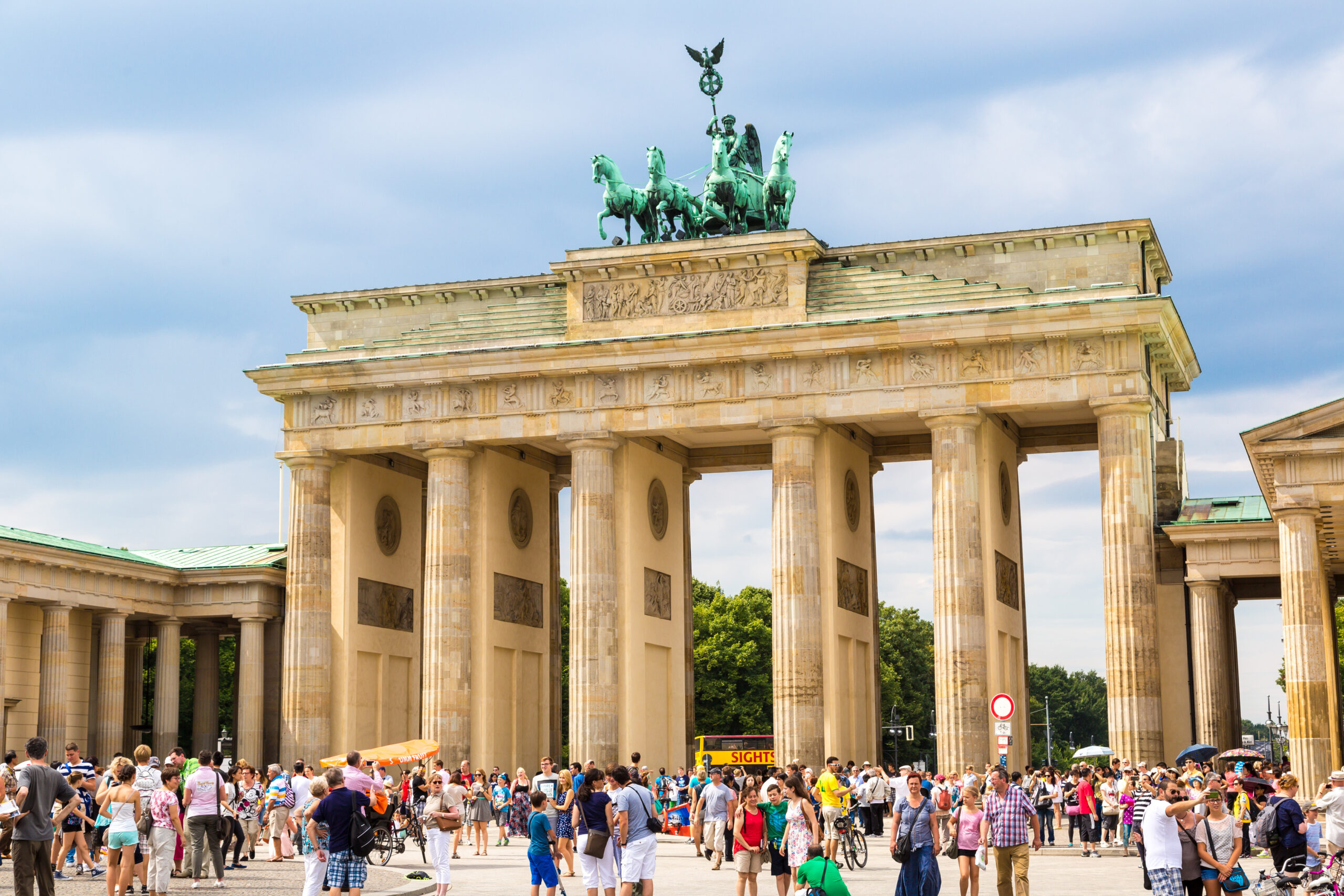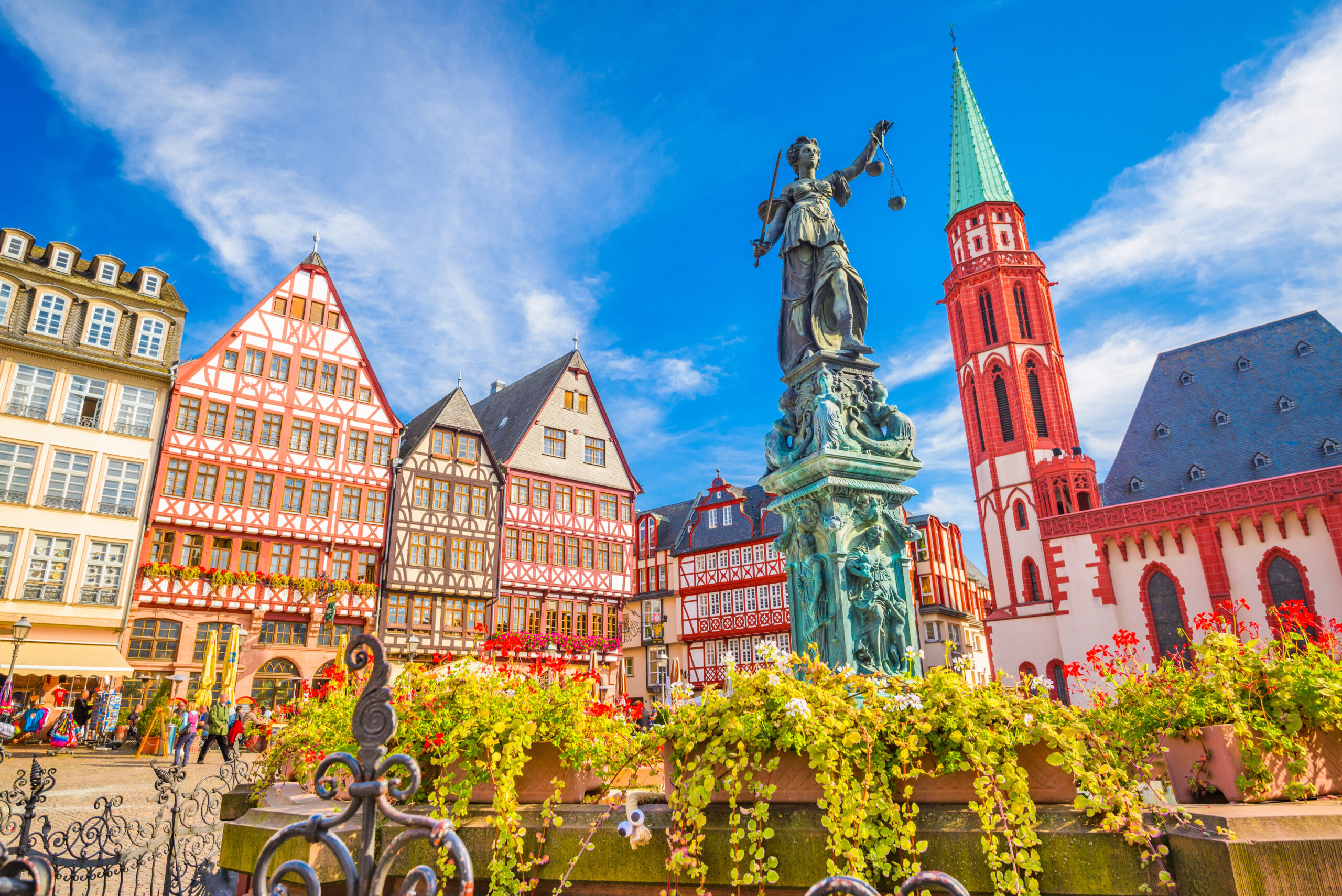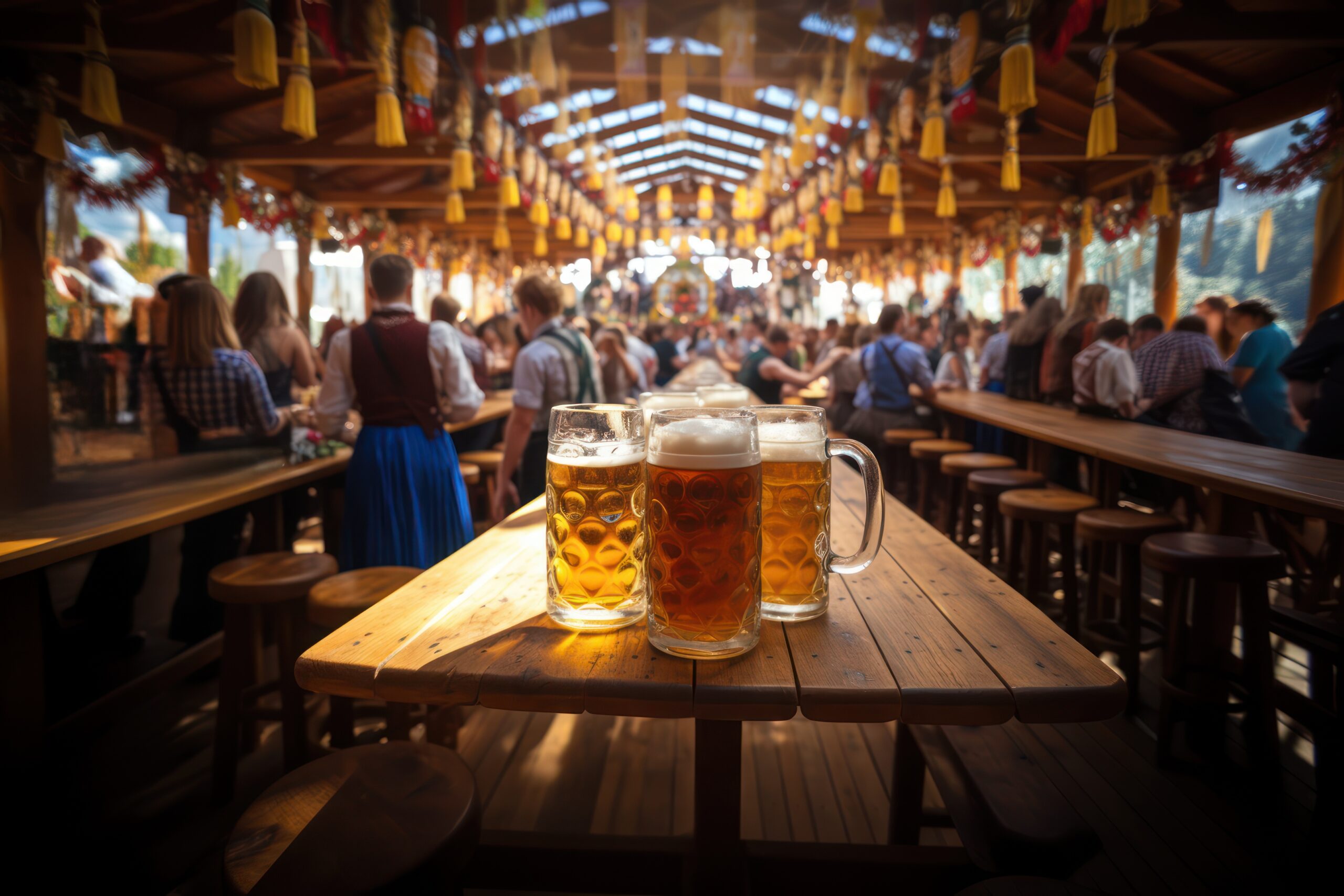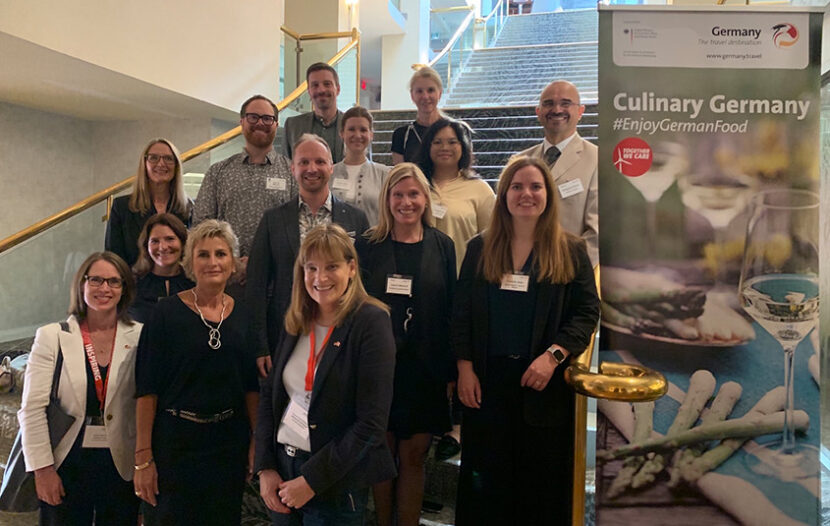TORONTO — After an incredibly strong year with visitation “almost back to where we were in 2019,” Anja Brokjans, Director, German National Tourist Office, says she’s “very enthusiastic” about the Canadian market’s performance in the months to come.
Canadian overnight stays were up 49.5% between January and July 2023 versus the same time frame in 2022.
Lift is strong too, with 114 nonstop flights from Canada to Germany per week. Representatives from Lufthansa, Air Canada and Condor were at yesterday’s event.
No doubt the country will see a surge of visitors towards the end of the year, as pent-up demand for Germany’s wonderful Christmas markets hits peak levels.
The GNTO’s campaigns are resonating with visitors. They include: Simply Feel Good; Barrier Free; 51 UNESCO World Heritage Sites; and Arts, Culture & Sports. On the sports calendar, Germany will play host to the UEFA Euro 2024 soccer tournament June 14 – July 14, 2024.
Yesterday’s GNTO luncheon, at Radisson Blu on Toronto’s waterfront on a lovely sunny day, included updates from no fewer than 10 of the GNTO’s partners.
Here’s a look at the highlights…
BAVARIA
Bavaria’s rich history, nature and culture are seen in the traditions and customs that are being revived by locals reshaping the Bavarian way of life. Susanne Miller with Bavaria Tourism says the organization is working with ‘Bavaria Insiders’ to promote the region, with a campaign that features locals passionately dedicated to everything from ethical winemaking to overseeing the first hut in the Alps featuring vegetarian specialties.

Berlin
BERLIN
Inka Rehahn with visitBerlin noted that 2024 marks the 35th anniversary of fall of Berlin Wall. Rehahn also highlighted ‘Munch in Germany’, with two exhibits – one at Berlinische Galerie, the other at Museum Barberini in Potsdam – focusing on Edvard Munch, the Norwegian-born painter who created The Scream and other famous paintings. “We have more museums than rainy days,” said Rehahn.
BADEN-BADEN
For centuries the town of Baden-Baden has been synonymous with spas, relaxation and wellness. With 12 thermal water springs, clean air and a car-free city centre, it’s no wonder Baden-Baden markets itself as ‘The good-good life’. With a location in the north of the Black Forest, with France on its doorstep, Baden-Baden is great for hiking and biking too.
DUSSELDORF
Fun fact about this modern metropolis on the Rhine: 1% of its population is Japanese, so visitors can experience Japanese hotels, restaurants and more alongside traditional German favourites. Dusseldorf is home to the Dusseldorfer Altstadt, where visitors can find the so-called longest bar in the world, a string of 300+ bars, clubs and more. Another popular spot: the Rhine Embankment Promenade.
FRANCONIA
Franconia’s wine, beer and rich heritage take centre stage in the region’s picturesque vineyards and medieval towns. In 2024 Franconia will celebrate the 750th anniversary of Rothenburg ob der Tauber. Franconia is also known for its much-loved self-drive routes including the GNTO’s Romantic Road and Castle Road, plus it’s home to five UNESCO sites.
FRANKFURT
Most travellers’ first association with Frankfurt is the city’s airport, and no wonder: FRA is the biggest airport in Germany, and the fourth largest in Europe. But Frankfurt’s tourism board reps urge travellers (and travel advisors) to get to know the city itself. Transiting airport passengers can get to the city centre with just a 12-minute, 3-stop train ride. Frankfurt saw extensive damage in WWII and in 2018, after eight years of work, a portion of the city reopened with 15 reconstructions and many more new buildings. The city’s 80 museums include many on the Frankfurt Museum Embankment, plus there are 40 parks and gardens here, and a 75 km cycling walking loop.

Frankfurt
HISTORIC HIGHLIGHTS OF GERMANY
Sascha Mayerer with Historic Highlights of Germany (HistoricGermany.com) says his organization focuses on 17 cities boutique destinations, including Bonn,
Bonn, Rostock, Freiburg and more. Known variously as ‘Germany’s Heritage Cities’ and ‘Germany’s Originals’, all 17 of the cities have between 100,000 – 400,000 inhabitants. All are also at least 700 years old, walkable and green, with centuries-old architectural styles. Even more convenient, all are also connected via the DB rail system. “With 17 historic destinations, we offer endless experiences,” said Mayerer.
MUNICH
For so many travellers, visiting Munich is a chance to connect with authentic German culture in a big city environment. Bavarian traditions are just about everywhere, especially the bustling Viktualienmarkt. The 2023 edition of the city’s biggest draw, Oktoberfest, wraps up today. Munich is home to 460 hotels, including the brand new Rosewood Munich, offering high-end luxury right in the city centre. Another new offering, a JW Marriott, will open in spring 2024.

Oktoberfest in Munich
SAXONY
Wolfgang Gartner, who heads up international marketing for Saxony Tourism, offered a long list of anniversaries for travellers heading to this popular region. They include the 300th anniversary of Green Vault in Dresden’s Royal Palace; the 600th anniversary “of Saxony becoming Saxony”; and the 150th anniversary of Saxony’s famous wine restaurant, Vincenz Richter. Meanwhile the celebrations marking 300 years of Bach in Leipzig continue. German Travel Mart 2024 will take place in Chemnitz next April.
STUTTGART
Stuttgart is a city surrounded by 16 hectares of vineyards and forests, plus it’s a cultural haven. The city is also known for modern automotive innovation, and visitors thrill to the Mercedes Benz Museum, and the Porsche Museum. True automotive fans should check out the car-themed V8 Hotel Superior, and V8 Hotel Classic.
For more information on all of Germany’s destinations check out Germany.travel.

